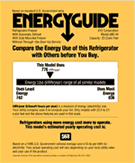Cordless Phones
Get Rebates,
Incentives & Services
Introduction
When seated in their rechargeable cradles, fully charged cordless phones continue to consume energy, regardless of whether or not they need it. This is because battery-charging systems can store as much as twenty-five times the amount of energy that is needed to fully charge your phone. Unable to control how much power it receives, the phone will continue to be charged until removed from the base station. This can lead to under or overcharging and damage the battery over time.
On average, cordless phones use two to three watts in both standby and active modes, meaning nearly 60% of the energy cordless phones use occurs while they are on standby. ENERGY STAR qualified cordless phones use about one-third of the energy that conventional models do.
Technology Options
Because cordless phones include a radio transmitter/receiver component, they may be subject to sound quality and security issues that wouldn’t occur with a corded phone. Sound quality can be affected by a number of things such as household appliances and distance. Security may also be an issue with some cordless phones because radio signals from both receiver and handset go over the open airway, where baby monitors, nearby cordless phones and other devices can pick them up.
FrequenciesYour cordless phone operates on various radio frequencies, which are set by the FCC (Federal Communications Commission). Cordless phones operate over four major frequency bands:
- 43-50 MH: Common to early cordless phones and still available in low-cost models. These phones have short ranges of about 1,000 feet due to low frequency and poorer sound quality because of interference from walls and appliances. This frequency can be picked up easily on radio scanners and nearby baby monitors.
- 900 MHz: More accurately 900-928 MHz, this band is the most common frequency for cordless phones today. The higher frequency gives it a greater range of 5,000 to 7,000 feet and better sound quality. 900 MHz signals can however be picked up by most commercially available radio scanners.
- 2.4 GHz: The FCC opened up this range in 1998 for cordless phone use. It operates over greater distances and is above frequencies that can be picked up by most commercially available radio scanners; therefore, it is more secure than lower frequency models.
- 5.8 GHz: Allocated in 2003 due to crowding on the 2.4 GHz band. Won’t pick up interference from microwave ovens and won’t cause interference with wireless networks or security systems.
Channels
Each frequency band listed above can be subdivided into different channels. The more channels a cordless phone base is able to search for, the easier it will be to find a frequency pair that is clear of interference, providing better sound-quality.
- 43-50 MHz and some inexpensive 900 MHz phones - 10 to 25 channels.
- Higher quality 900 MHz phones - 20 to 60 channels.
- High-end 900 MHz and 2.4/5.8 GHz phones - 50 to 100 channels.
Analog Vs. Digital
Analog technology is common in cordless phones, especially in inexpensive models. Analog signals tend to be more noisy and prone to interference with respect to sound quality. In addition, analog signals are easily picked up and interpreted by radio scanners.
Digital technology has clearer and more secure phone signals. In 1995, DSS (Digital Spread Spectrum) was introduced for cordless phones, spreading the digital information in pieces over several frequencies between receiver and base, making it practically impossible to eavesdrop on cordless phone conversations. If security is your number one priority, digital technology is your best option.
Dual/Multi Handset
Dual or multi handsets are useful if you are limited in the number of phone jacks you have in your home and do not wish to install additional ones. These phones incorporate a main base unit that plugs into a phone-jack and an electrical outlet, and can support anywhere from one to eight extra handsets. Only one electrical outlet is needed for the additional handsets and their charging stations.
Efficiency Benefits
Today, the appliances in an average household cause more global warming pollution annually than an average car. There are a number of simple ways to save energy and money around the home, including paying attention to the energy used by your small appliances.
|
||
Manufacturers
A current list of ENERGY STAR qualified cordless phone manufacturers can be found on ENERGY STAR’s website.
Panasonic offers the DECT cordless telephone model: a 100% ENERGY STAR qualified model with rechargeabe nickel-metal hydride batteries and a nearly 30% reduction in packaging.











